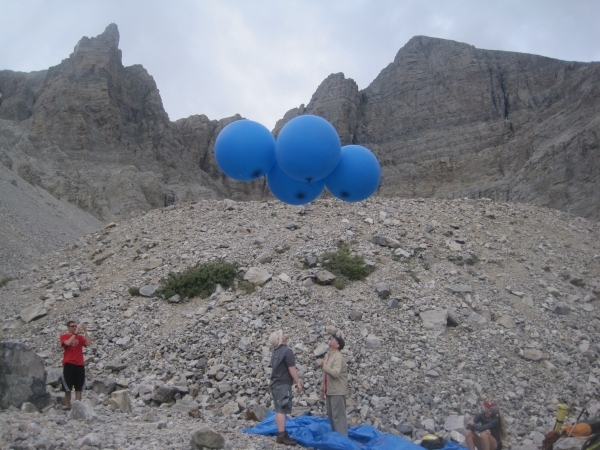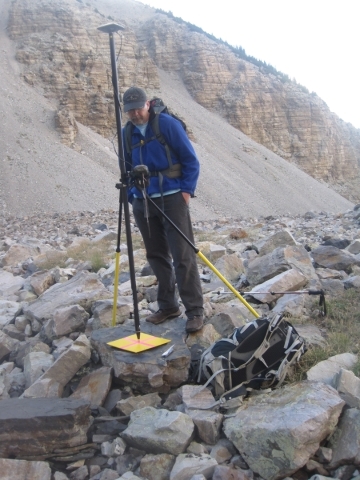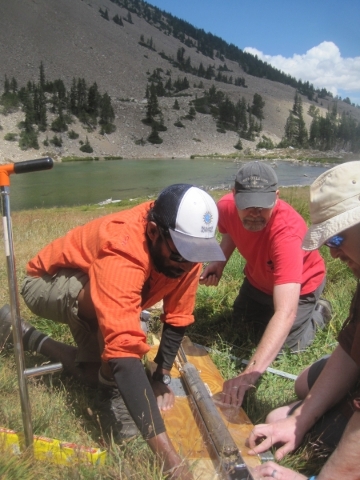Researchers say Nevada alpine lakes may be warmest in 7,000 years
The alpine lakes high in Nevada's only national park are warmer now than they have been for thousands of years, according to findings by a team from Ohio State University.
For the past decade, the researchers have conducted a variety of studies at Great Basin National Park, 300 miles northeast of Las Vegas, aimed at reconstructing the climate record for the area over the past 7,000 or so years.
Using core samples of lake-bed sediment and other clues collected during annual visits to the park, they think they have identified a warming trend that began about 35 years ago and continues today.
"In Stella Lake, the temperatures are higher (now) than pretty much anything we're seeing going back about 2,000 years," said Scott Reinemann, an adjunct professor in Ohio State's Department of Geography. "They're probably the warmest temperatures in the past 7,000 years."
Their work could help predict the future of the park and its glaciers — including the shrinking remnant of the only exposed ice glacier left in Nevada — in the face of global warming.
"Their research is quantifying climate change in the park," said Gretchen Baker, a National Park Service ecologist at Great Basin. "We're not just saying it's happening here. They're getting real data."
Life on the edge
The effort began in 2005, when the team collected its first sediment core sample from Stella Lake, a shallow, crystalline pool at the base of the rocky cirque of Wheeler Peak, Nevada's second-tallest mountain.
Since then, they have returned with their inflatable rafts to drill more 4-inch-diameter cores from Stella and other alpine lakes near the park's 10,000-foot mark.
The resulting tubes of layered sediment were then radio-carbon dated and examined for wood fragments, pine needles and evidence of tiny flies called midges.
Reinemann said the midges proved especially useful in identifying past changes in air temperature, since different types of the insect live in different climates. For much of the 20th century, for example, the midge communities in the lakes remained relatively constant, but a rapid change was observed after 1980, when the cooler-adapted bugs were replaced by types that prefer warmer conditions.
Reinemann said alpine lakes like the ones protected within Great Basin National Park provide an ideal setting to study shifts in climate, because they tend to be remote, relatively undisturbed by humans and highly susceptible to change.
"A lot of times, they can be the canary in a coal mine," he said of such high-altitude lakes and the organisms that are found there. "They are living on the edge, so if something changes it is likely to show up there first."
The team tried something new during this year's visit to the park in August. They mounted a digital camera to four, 4-foot-diameter helium balloons and used tethers to walk it across the Wheeler Cirque rock glacier, snapping a picture of the ground every 10 seconds from about 100 feet in the air.
Reinemann said the individual pictures don't look like much, but when stitched together they should produce a detailed, three-dimensional map of the rock glacier.
Then they can use the embedded GPS data, which is accurate to within less than a foot, to track subtle changes to rocks on the surface as they rise and sink based on the thickness of the ice underneath.
"We can come back every couple of years to compare it," Reinemann said.
Mountaintop field trip
Researchers also spent this year's two-week trip pulling sediment cores from two meadows that once were lakes, collecting water samples to look for glacial runoff and evidence of air pollution, and performing routine maintenance on sampling equipment they have scattered around the park. That includes a network of 30 sensors — each requiring a fresh battery once a year — that log hourly temperature and humidity levels across an 8,000-foot vertical expanse from the main Great Basin visitor center to the ridge leading to Wheeler Peak, almost 13,000 feet above sea level.
"We're really glad they're coming out here and helping us learn more about the park," Baker said.
Reinemann said Ohio State and its students are getting a lot out of it, too: Undergraduates get to participate in real scientific field work, and graduate students get to publish papers and earn advanced degrees.
It's also a beautiful place to work, he said, though conducting research so high in the mountains does have its challenges.
Wind is a constant problem. A few years ago, researchers placed a weather station on top of the park's Bald Mountain, but when they returned the following year several sensors rated to withstand hurricane-force winds of 150 mph or more were nowhere to be found, Reinemann said.
Over the years, they've also had a few data collectors carted off or vandalized, including ones they placed on top of Wheeler Peak. They even tried putting a decoy up there, but the real unit was tampered with, anyway.
"That's something we've never understood," Reinemann said, adding with a laugh, "Probably Michigan fans."
Contact Henry Brean at hbrean@reviewjournal.com or 702-383-0350. Follow him: @RefriedBrean
























